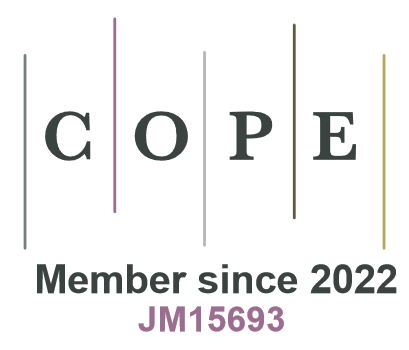Predicting longevity from the line of life: is it accurate?
DOI:
https://doi.org/10.2478/anre-2019-0011Keywords:
dermatoglyphics, Cheiro, palmistryAbstract
Palmistry or Chiromancy is the art of reading lines on the palm of the hands. Today, many researchers believe that the lines on the palms of the hands can predict the individual’s future. Computer programs are being designed which can automatically read the lines on the palm of the hand. One popular theory is that the length of the line of life will indicate lifespan. This theory was investigated in 1974 by Wilson and Mather who found no significant correlation between life expectancy and the length of the line of life. In 1990 Newrick and colleagues found a significant correlation as measured on 100 cadavers. These conflicting investigations are the only existing studies which have explored the relationship between palmistry and longevity. Since then no other study has validated nor disproven these claims. A total of 60 cadavers donated to The University of Adelaide were used in this study. Total hand length and the line of life length were measured on all cadavers. The age at and cause of death were also recorded. Linear regressions were used to establish any correlations between longevity and the length of the line of life. No significant correlations were found. There was also no significant difference between males and females or the right or left hands. As no significant correlations were found between longevity and the line of life all efforts at producing more reliable and automatic ways to read the lines are futile. This study puts to rest any debate surrounding the use of the line of life in palmistry as introduced by Newrick and colleagues.
Downloads
References
Cheiro, 1988. Cheiro’s palmistry for all: the classic of palmistry: a practical work on the study of the lines of the hand. New York: Prentice Hall Press.
View in Google Scholar
Cheiro, Owen L. 1977. You and Your Hand. London: Sphere.
View in Google Scholar
Desai D, Parekh M, Shah D, Sawant D, Nagare A. 2015. Automated medical palmistry system based on image processing techniques. IJARCSSE 5:725–29.
View in Google Scholar
Hamon L. 1900. Cheiro’s Language of the hand. London: Nichols & Company.
View in Google Scholar
Hamon L. 1975. Cheiro’s Guide to the Hand. London: Corgi Books.
View in Google Scholar
Hodges G. 1995. Lifeline on your palm really does tell how long you’ll live. Weekly World News. Oct 24:6.
View in Google Scholar
Jones FW. 1942. The principles of anatomy as seen in the hand. ed 2. Baltimore: Williams & Wilkins co.
View in Google Scholar
Mardia KV. 1990. On longevity and life-line. J Appl Stat 17:443–448.
View in Google Scholar
Navpat A, Mukherjee R, Pandita V, Gupta S. 2012. Application of prediction software in palmistry. MGPI National Multi Conference 7–8th April.
View in Google Scholar
Newrick PG, Affie E, Corrall RJ. 1990. Relationship between longevity and lifeline: a manual study of 100 patients. J R Soc Med 83:499–501.
View in Google Scholar
Pandit H, Shah DM. 2011. Application of digital image based processing and analysis in healthcare based medical palmistry. International Conference on Intelligent Systems and Data Processing.
View in Google Scholar
Penrose LS. 1973. Fingerprints and palmistry. The Lancet 301:1239–42.
View in Google Scholar
Sharma MJ, Jhawar P, Sharma H, Sharma S, Kalavatia I. 2012. Dermatoglyphics an attempt to predict downs syndrome. IJBMR 3:1631–35.
View in Google Scholar
Shiono H. 1986. Dermatoglyphics in medicine. Am J Forensic Med Pathol 7:120.
View in Google Scholar
Wilson ME, Mather LE. 1974. Life expectancy. JAMA 229:1421–1422.
View in Google Scholar
Downloads
Published
How to Cite
Issue
Section
License
Copyright (c) 2019 Anthropological Review

This work is licensed under a Creative Commons Attribution-NonCommercial-NoDerivatives 4.0 International License.








